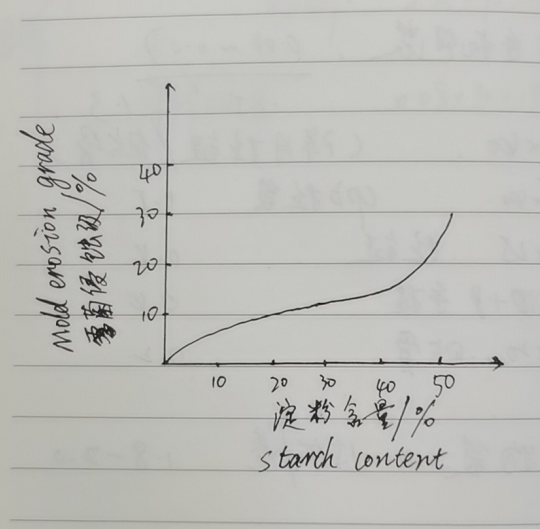Biodegradable shopping bags are generally packaging bags produced from starch-based raw materials.
According to the mold erosion test of GB/T 17295 (MOD ISO846), Weng Yunxuan and others of the National Plastic Products Quality Supervision and Inspection Center conducted potential degradation performance test experiments on degradable shopping bags with different starch content. The results of the experiment are shown in the figure. .

It can be seen from the above figure that after 28 days, the PE shopping bag with 50% potato starch and the PE shopping bag with 50% corn starch have lost more than 30% of their quality. Among them, 50% of the potato starch PE shopping bag is basically broken down into small pieces. . The degradable shopping bag containing 15%-25% cornstarch only reached 11.4% on average after 28 days. But the starch-containing PE shopping bag basically does not grow mold after 28 days. It can be concluded that the addition of starch is definitely beneficial to the growth of mold, but when the filling amount of starch exceeds 50%, the mold erosion effect of the degradable shopping bag is definitely good. However, when the starch content is 15%~39%, the increase in starch content will not have a great impact on the degradation quality loss of the degradable shopping bag. The reason may be that the attack point of the degradable shopping bag by microorganisms in the degradation experiment did not increase greatly with the rapid increase of starch content. Therefore, the quality loss did not increase greatly with the rapid increase of starch content.
The above experiments show that although starch-filled traditional plastic shopping bags cannot be biodegraded, they are partially degradable and are susceptible to mold erosion. Therefore, when producing degradable shopping bags, attention should be paid to the required degradation performance requirements and the requirements for mildew resistance.






